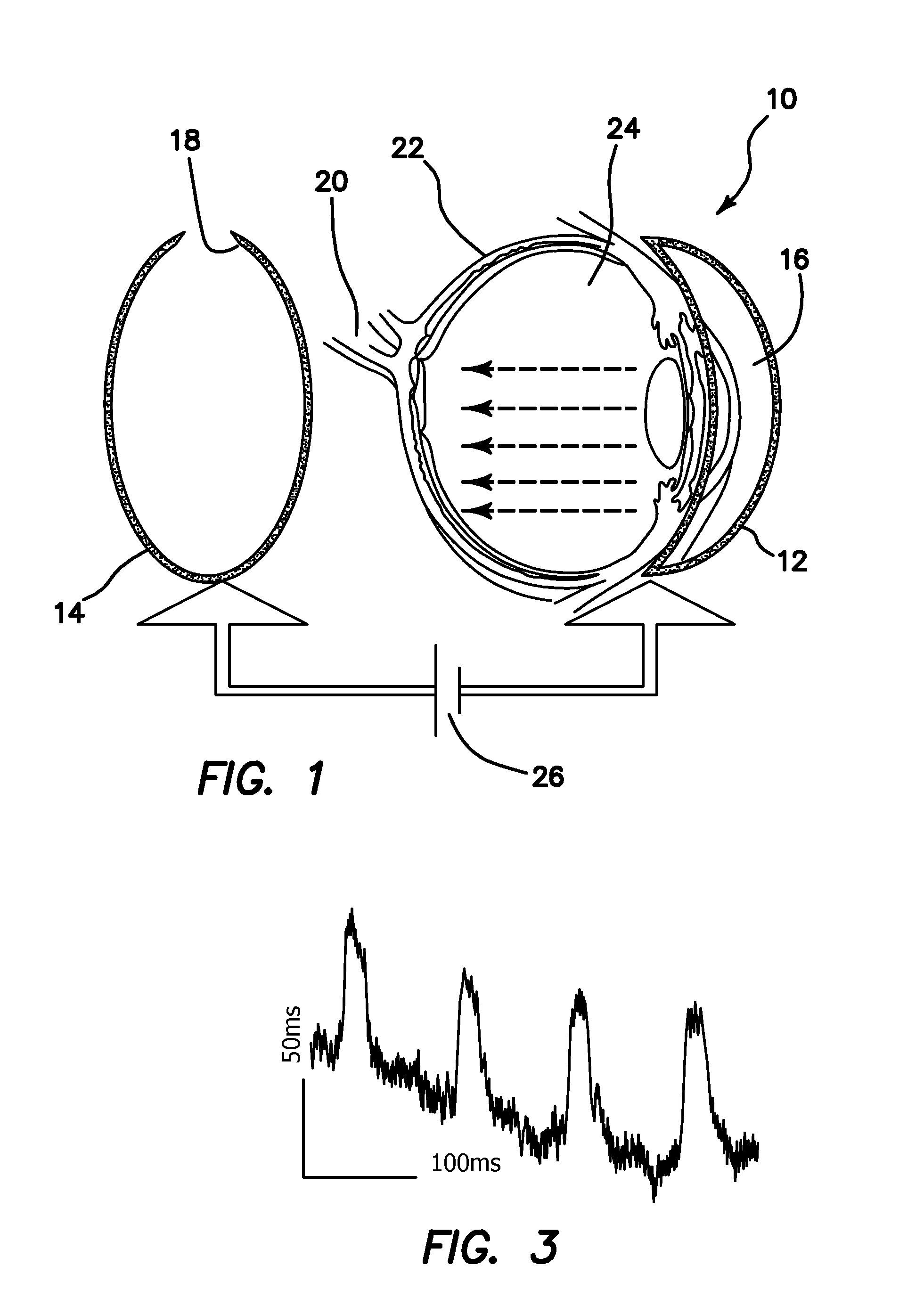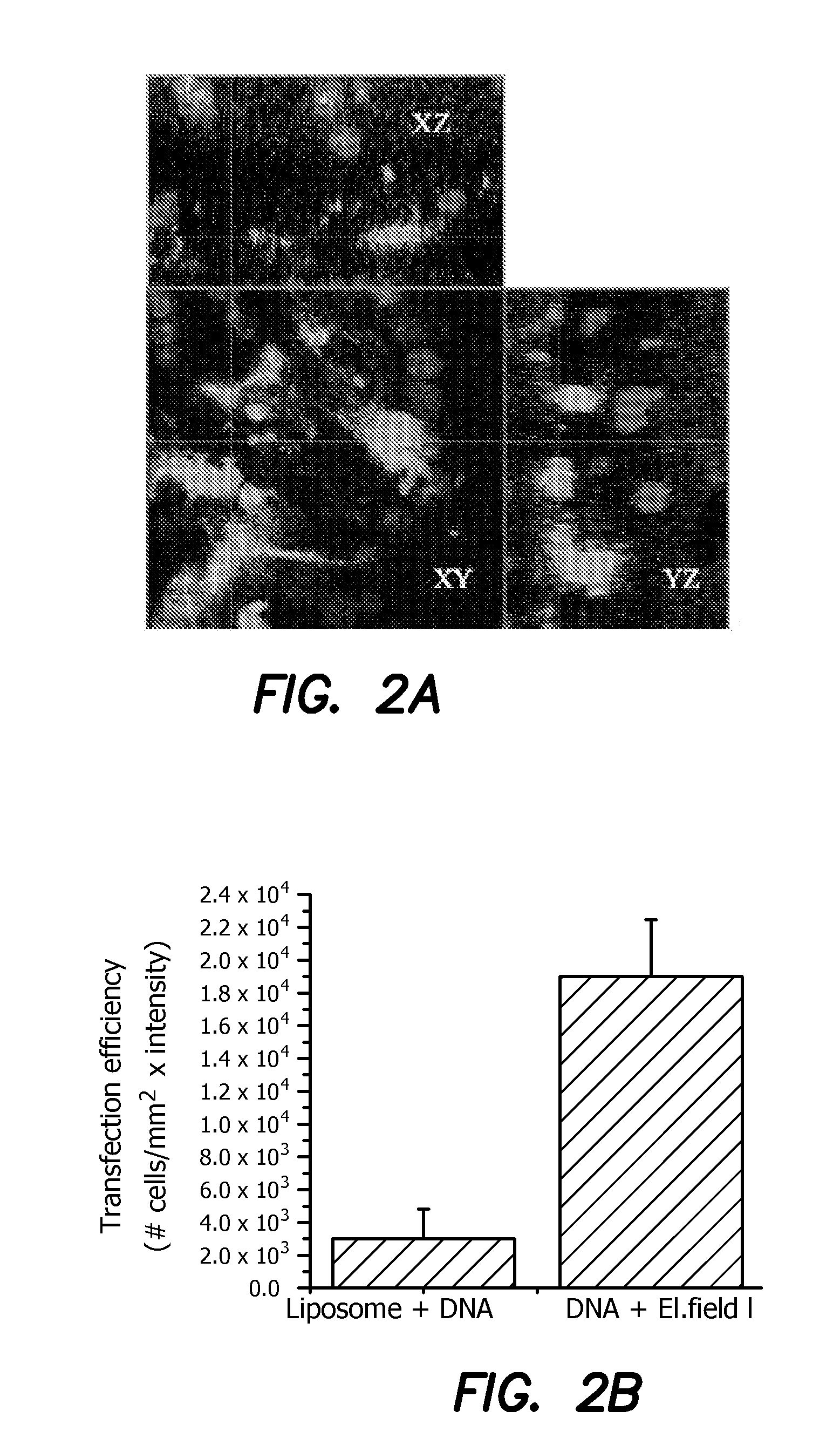Method and apparatus for optogenetic treatment of blindness including retinitis pigmentosa
a technology of retinitis pigmentosa and optogenetic treatment, which is applied in the field of optogenetic treatment of blindness including retinitis pigmentosa, can solve the problems of insufficient current generation of one microphotodiode, no therapy that can be restored, and device damage over a period of time, so as to achieve efficient injection into the retina, improve behavioral improvement, and improve the effect of vision
- Summary
- Abstract
- Description
- Claims
- Application Information
AI Technical Summary
Benefits of technology
Problems solved by technology
Method used
Image
Examples
Embodiment Construction
[0039]In diseases such as Retinitis pigmentosa (RP), one of the most common forms of inherited retinal degeneration, progressive loss of photoreceptor cells occurs which eventually leads to blindness. Here, we disclose an in vivo method for efficient delivery of plasmids encoding light-sensitive proteins (ChR2) into the eye of small animal models having retinitis pigmentosa with the aim to restore vision. The illustrated delivery system is comprised of a hemi-spherical cathode to be placed on the cornea and an accommodating anode in back of the eye, driven by optimal electric pulses. Through electroporation of plasmids into a specific layer in the retina (e.g. promoter-specific to retinal ganglion cells), we eliminated the disadvantages of the viral delivery method such as safer administration and avoiding the difficulties in incorporating a large construct of promoter, ChR2, and a fluorescent protein marker into the lentivirus / Adeno associated virus. The specific layer of the retin...
PUM
| Property | Measurement | Unit |
|---|---|---|
| electric field | aaaaa | aaaaa |
| diameter | aaaaa | aaaaa |
| diameter | aaaaa | aaaaa |
Abstract
Description
Claims
Application Information
 Login to View More
Login to View More - R&D
- Intellectual Property
- Life Sciences
- Materials
- Tech Scout
- Unparalleled Data Quality
- Higher Quality Content
- 60% Fewer Hallucinations
Browse by: Latest US Patents, China's latest patents, Technical Efficacy Thesaurus, Application Domain, Technology Topic, Popular Technical Reports.
© 2025 PatSnap. All rights reserved.Legal|Privacy policy|Modern Slavery Act Transparency Statement|Sitemap|About US| Contact US: help@patsnap.com



